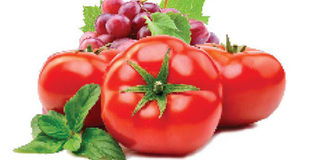Fight disease with an anti-inflammatory diet

Tomatoes contain a great deal of Vitamin A and Vitamin C which work as antioxidants to neutralize harmful free radicals in the body. Free radicals in the blood stream are dangerous they lead to cell damage. FILE PHOTO
What you need to know:
- For better results, do not boil the green tea leaves with the water but rather dip the green tea leaves in hot water. Putting milk in your green tea reduces the anti-oxidant value in it.
- Other foods can include avocados, berries, bell peppers, fruits and vegetables. Drinking a lot of water is very helpful too.
Inflammation is the body’s response to illnesses including infections or injuries. When you get an injury, the immune system sends an increased number of white blood cells to the area to fight off the bacteria. This then results into healing.
There are several chronic inflammatory diseases however, such as arthritis, diabetes, asthma that can cause the immune system to go into overdrive and attack healthy tissues. These may be managed with an anti-inflammatory diet.
Mushrooms
Amanda Tumwebaze, a nutritionist, says mushrooms are low in calories and contain minerals such as zinc, selenium, copper, B vitamins riboflavin and niacin. Consuming them raw or half cooked may help you reap their full anti-inflammatory potential.
Grapes
Grapes contain immunity-boosting vitamin C, simple sugars that provide instant energy and antioxidants that are anti-inflammatory. Anthocyanins antioxidants in red grapes generate anti-allergic, anti-inflammatory, antimicrobial, and anti-cancer activities.
The anti-inflammatory properties in the grapes help to inhibit the formation of free radicals that could cause cancer and dilating blood vessels to ease blood flow and lower blood pressure.
They also reduce the risk of several diseases including heart disease, diabetes, obesity and eye disorders. It is important to note that the highest antioxidant content is in the seeds and the skin.
Tomatoes
Tomatoes are packed with three types of antioxidants – Lycopene (that gives tomato its bright red colour), Vitamin C and Vitamin A. Vitamin C is one of the most potent types of antioxidants that you can derive from fruits and vegetables. The lycopene in tomatoes can reduce inflammation and is best absorbed when they are cooked.
Fausta Akech, a nutritionist at Healthy U, says, “They contain nutrients that act as body cleansers. They are good for your skin. They also contain vitamin B and potassium which are good for your heart and kidney. You can eat them raw or add them to whatever you may be cooking.”
They also contain a great deal of Vitamin A and Vitamin C which work as antioxidants to neutralize harmful free radicals in the body. Free radicals in the blood stream are dangerous they lead to cell damage.
Green tea
Green tea contains plant-based antioxidants which support proper functioning and detoxifying the liver. It is very good for your skin and helps stop inflammation, slows DNA damage.
The flavonoids present in green tea relieve irritation and inflammation caused by pink eye while fighting bacterial and viral infections.
“Green tea if taken frequently can improve insulin sensitivity and therefore reduce the level of blood sugars thereby reducing the risk of diabetes, heart diseases and stroke by constraining the formation of blood clots in the body,” Akech.
For better results, do not boil the green tea leaves with the water but rather dip the green tea leaves in hot water. Putting milk in your green tea reduces the anti-oxidant value in it.
Other foods can include avocados, berries, bell peppers, fruits and vegetables. Drinking a lot of water is very helpful too.
It is also advisable to reduce the amount of fast foods and carbonated drinks as well as sugary beverages.
Tit bits
• As a general rule, an anti-inflammatory diet is rich in fruits and vegetables (especially leafy greens), legumes, nuts and seeds, and whole grains, as well as omega-3 fatty acids.
• To achieve an anti-inflammatory diet, try consuming foods that have the following four properties: antioxidant activity, detoxifying activity, nutrient density, and hormone-regulating activity




